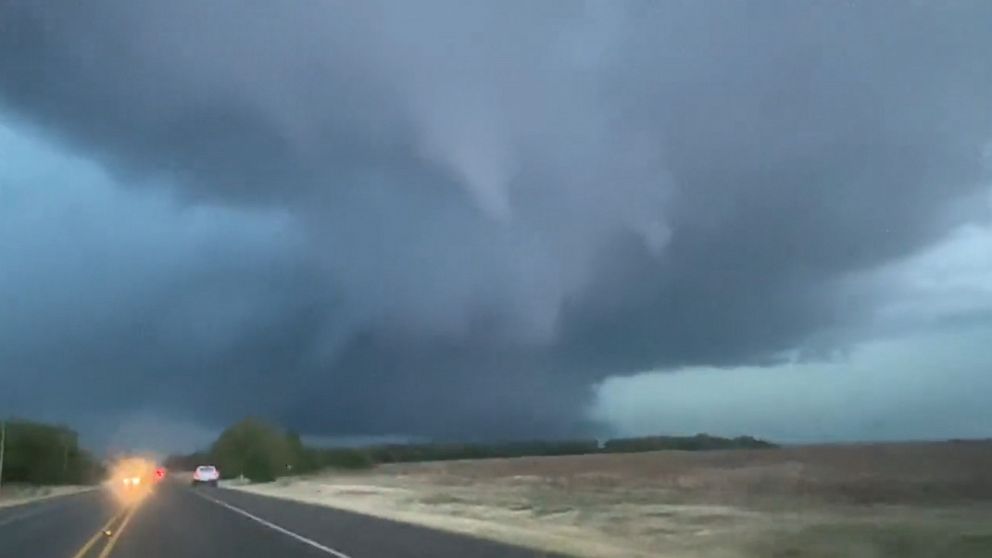Where Did the Tornado Hit in Texas?
Tornadoes are one of nature’s most destructive forces, capable of causing immense damage and tragedy. Texas, known for its size and varying weather conditions, is no stranger to tornadoes. Over the years, several parts of the state have experienced the devastation these powerful storms can bring. In this article, we will explore some of the notable areas where tornadoes have hit in Texas, recounting the events and the impact they had on the affected communities.
**In April 2017, Canton was struck by a devastating tornado that tore through the town, leaving a trail of destruction in its path.**
On April 29, 2017, an EF-4 tornado touched down near Canton, a city located approximately 60 miles east of Dallas. The tornado, with winds reaching estimated speeds of up to 180 mph, carved a destructive path through parts of Van Zandt County. Sadly, the storm claimed the lives of four people and caused numerous injuries.
The twister damaged or destroyed over 250 homes, as well as other buildings, including schools and churches. The destruction was so severe that the National Weather Service deemed it one of the most intense tornadoes to hit the state in recent years.
**In May 1997, the city of Jarrell experienced a catastrophic tornado that resulted in tragic loss of life.**
Jarrell, a small town located north of Austin, was hit by an EF-5 tornado on May 27, 1997. This tornado, with winds exceeding 260 mph, obliterated almost everything in its path, including homes, businesses, and a local high school. The storm claimed the lives of 27 people, leaving the community devastated.
The Jarrell tornado stands as one of the deadliest in Texas history and serves as a reminder of the immense destructive power of tornadoes. In the aftermath, the community rallied together to rebuild and support one another, showcasing the resilience and spirit of the people.
**In March 2012, multiple tornadoes struck the Dallas-Fort Worth Metroplex, causing widespread damage.**
The Dallas-Fort Worth Metroplex, home to millions of residents, experienced a series of tornadoes on April 3, 2012. These storms caused significant damage across multiple counties, including Dallas, Tarrant, and Johnson. Although the tornadoes were not classified as high-end on the Enhanced Fujita scale, they still left a lasting impact on the affected areas.
Hundreds of homes and businesses sustained damage, and dozens were completely destroyed. Additionally, numerous vehicles were overturned, and power outages were widespread. Thankfully, there were no fatalities reported, but several people were injured.
**In May 1979, Wichita Falls faced the wrath of a powerful tornado that left a lasting mark on the city.**
Wichita Falls, located in North Texas, endured a destructive tornado on April 10, 1979. The EF-4 tornado, with estimated winds of around 170 mph, tore through the city, causing immense damage and leaving a lasting impact on the community.
Over 1,000 homes and businesses were destroyed or severely damaged, and 42 lives were tragically lost. The tornado also caused significant disruptions to infrastructure, including the destruction of a television tower and damage to a shopping mall.
**Frequently Asked Questions**
How often do tornadoes hit Texas?
Texas experiences a high frequency of tornadoes, with an average of around 150 tornadoes reported each year. The state’s large size and varying weather patterns contribute to the likelihood of tornado formation. While tornadoes can occur throughout the year, the peak season typically falls between March and June.
What precautions should I take during a tornado warning?
If a tornado warning is issued in your area, it is crucial to take immediate precautions to protect yourself and your loved ones. Some essential steps to take include finding shelter in a windowless interior room or basement, covering yourself with a mattress or heavy blankets for added protection, and staying away from windows or exterior walls. It is also wise to have an emergency kit prepared with essential supplies such as flashlights, batteries, a first aid kit, and non-perishable food and water.
What is the Enhanced Fujita scale?
The Enhanced Fujita (EF) scale is used to rate the intensity and wind speeds of tornadoes based on the damage they cause. The scale ranges from EF-0 (weak) to EF-5 (incredible), with the latter being the most severe. The scale takes into account various factors, including damage to buildings, trees, and other structures, to determine the tornado’s intensity.
Final Thoughts
Tornadoes have had a significant impact on various communities in Texas throughout the years, causing destruction, loss of life, and long-term effects. The resilience and strength of these communities, however, continue to shine through as they rebuild and support one another in the face of adversity. Being prepared and informed about tornado safety measures is crucial for residents of tornado-prone areas, ensuring their safety and well-being during severe weather events. Let us remember the lessons learned from these devastating tornadoes and work together to create a safer and more resilient future.
